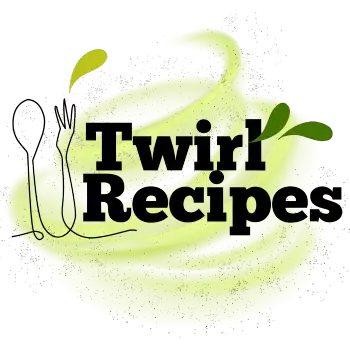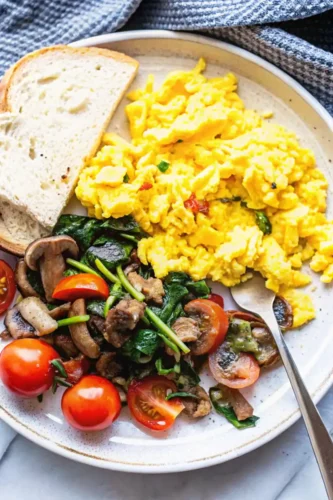Sweet potato bread is the ultimate cozy bake, soft, moist, and packed with warm spices that make every slice irresistible. This loaf gets its rich flavor from mashed sweet potato, giving it a naturally sweet, velvety texture that pumpkin bread just can’t beat. And because it’s topped with a creamy layer of cream cheese frosting, it feels like dessert and comfort food all at once.
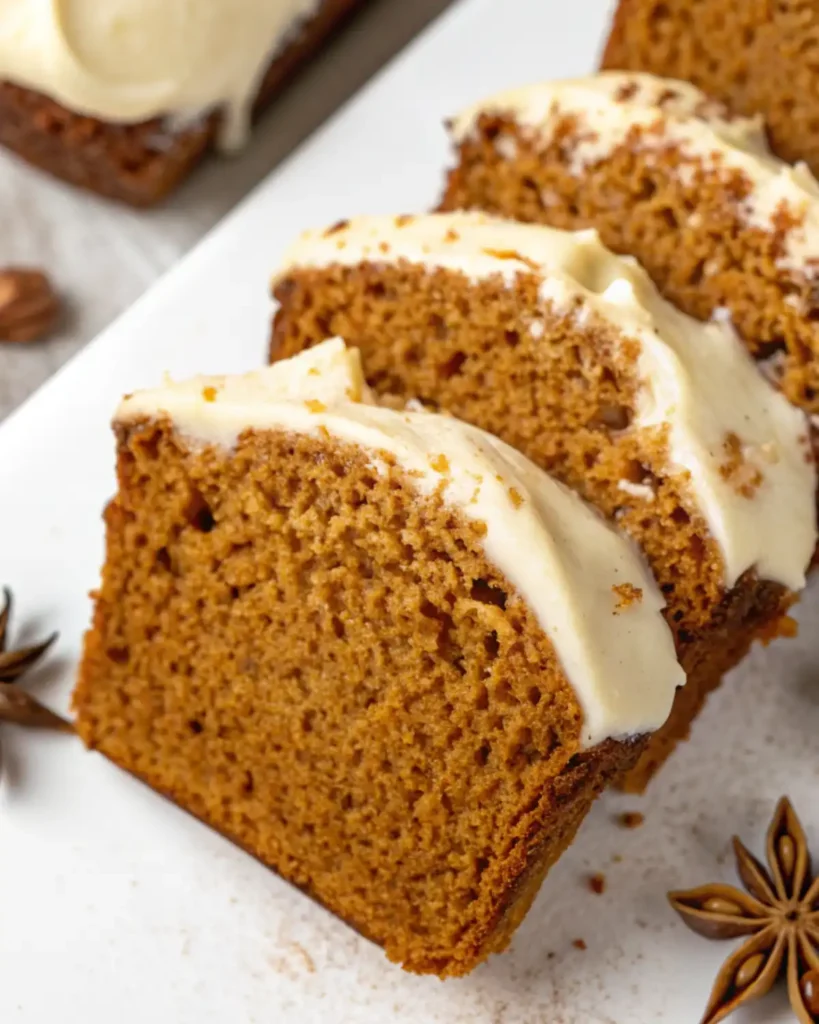
What makes this sweet potato bread even better is how simple it is to make. Everything comes together in one bowl, no fancy steps required, and the result is a bakery-style loaf that tastes even better at home. Whether you’re serving it for brunch, as an afternoon snack, or as a cozy fall treat, this sweet potato bread will quickly become a family favorite.
Table of Contents
Why You’ll Love Sweet Potato Bread
There are so many reasons this sweet potato bread deserves a spot in your kitchen. It’s one of those recipes that checks all the boxes, flavor, texture, and simplicity, while still feeling special every single time you bake it. Here’s why you’ll love it:
- Moist and tender crumb – thanks to mashed sweet potato, the loaf stays soft and fluffy without ever drying out.
- Packed with warm spices – cinnamon, nutmeg, and ginger create that cozy fall flavor everyone craves.
- Topped with cream cheese frosting – a rich, tangy layer that perfectly balances the sweetness of the bread.
- One-bowl recipe – no complicated steps or special equipment, making it stress-free for busy days.
- Family-approved – kids love the sweetness, adults love the spice, and it disappears quickly every time.
- Perfect for any moment – enjoy it warm with coffee at breakfast, as an afternoon treat, or dressed up for the holidays.
Sweet potato bread isn’t just another quick bread, it’s comfort, nostalgia, and a little bit of indulgence all baked into one irresistible loaf. Once you try it, you’ll understand why it’s a recipe worth repeating all season long.
What You’ll Need
Sweet potato bread is the kind of recipe that proves simple ingredients can create something extraordinary. You don’t need anything fancy, just one bowl and these pantry staples:
- Sweet potato – the heart of this bread. Cook, mash, and let it cool before mixing. Roasting makes it sweeter, while boiling is quicker and easier.
- Flour – plain all-purpose flour gives the loaf its soft structure.
- Sugar – a blend of brown sugar for richness and white sugar for light sweetness.
- Eggs – they bind the ingredients together and add a touch of richness.
- Oil – keeps the bread moist and tender (use a neutral oil like vegetable or canola).
- Warm spices – cinnamon, nutmeg, and ginger add that unmistakable cozy flavor.
- Baking soda & baking powder – to help the loaf rise perfectly.
- Salt – a small pinch that makes all the flavors pop.
- Cream cheese frosting – a dreamy mix of cream cheese, butter, powdered sugar, and vanilla for that tangy-sweet finish.
That’s all it takes, simple ingredients, one bowl, and a little time in the oven for a loaf that feels like a bakery treat made right at home.
How to Make Sweet Potato Bread: Step-by-Step
The best thing about this sweet potato bread—besides the flavor—is how easy it is to make. Everything comes together in just one bowl, which means less cleanup and more time to enjoy that first warm slice. Here’s how to do it:
Cook the sweet potato
Start by baking or boiling your sweet potato until it’s soft and tender. Roasting in the oven will give you extra sweetness, but boiling works just fine too. Once cooked, mash it until smooth and let it cool slightly.
Mix the wet ingredients
In a large bowl, whisk together the mashed sweet potato, sugar, eggs, oil, and vanilla until smooth and creamy. This step locks in all the moisture that makes the bread so soft.
Add the dry ingredients
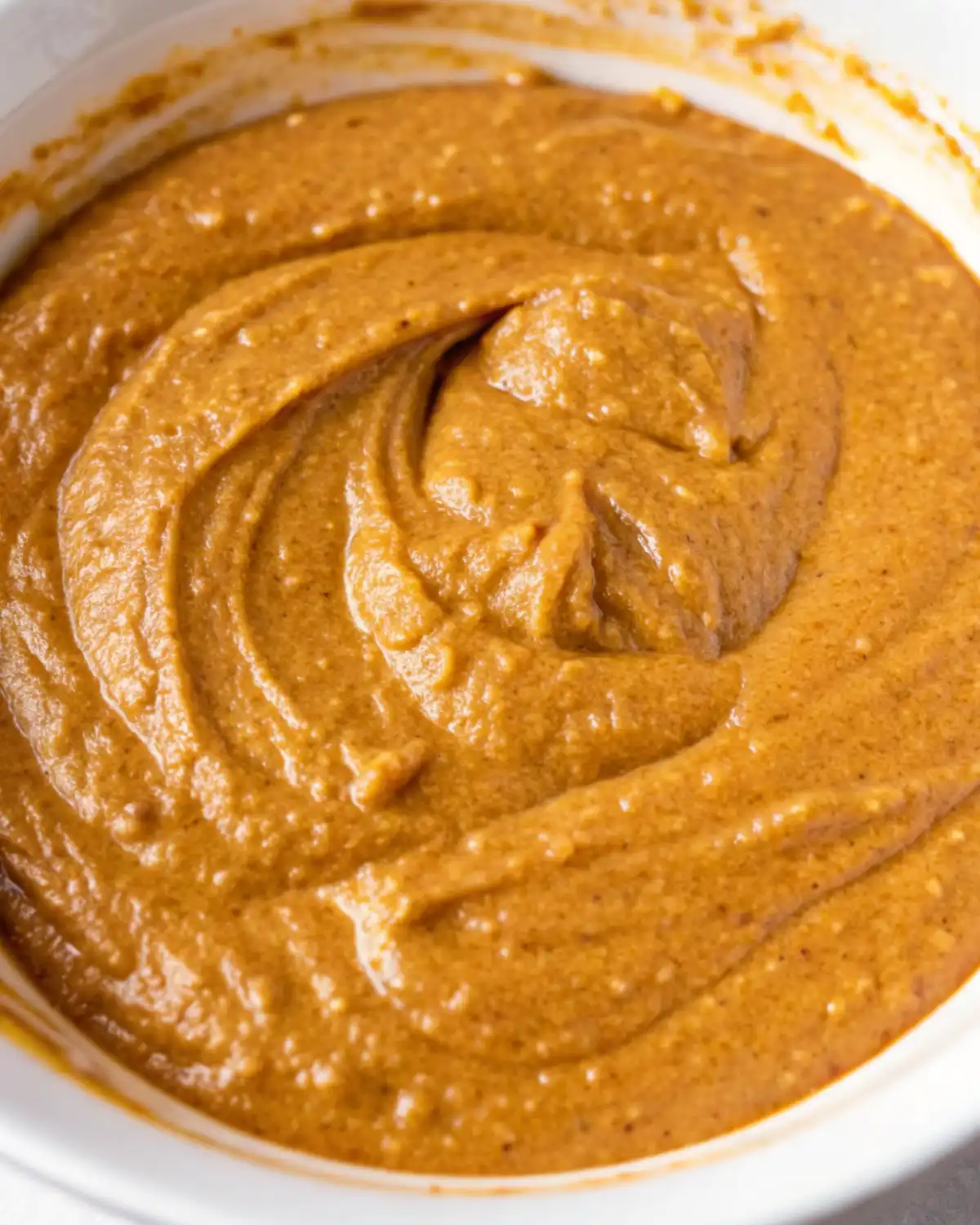
Sprinkle in the flour, baking soda, baking powder, salt, and warm spices. Gently fold everything together with a spatula or whisk until just combined—no overmixing! A few streaks of flour are fine.
Bake the loaf
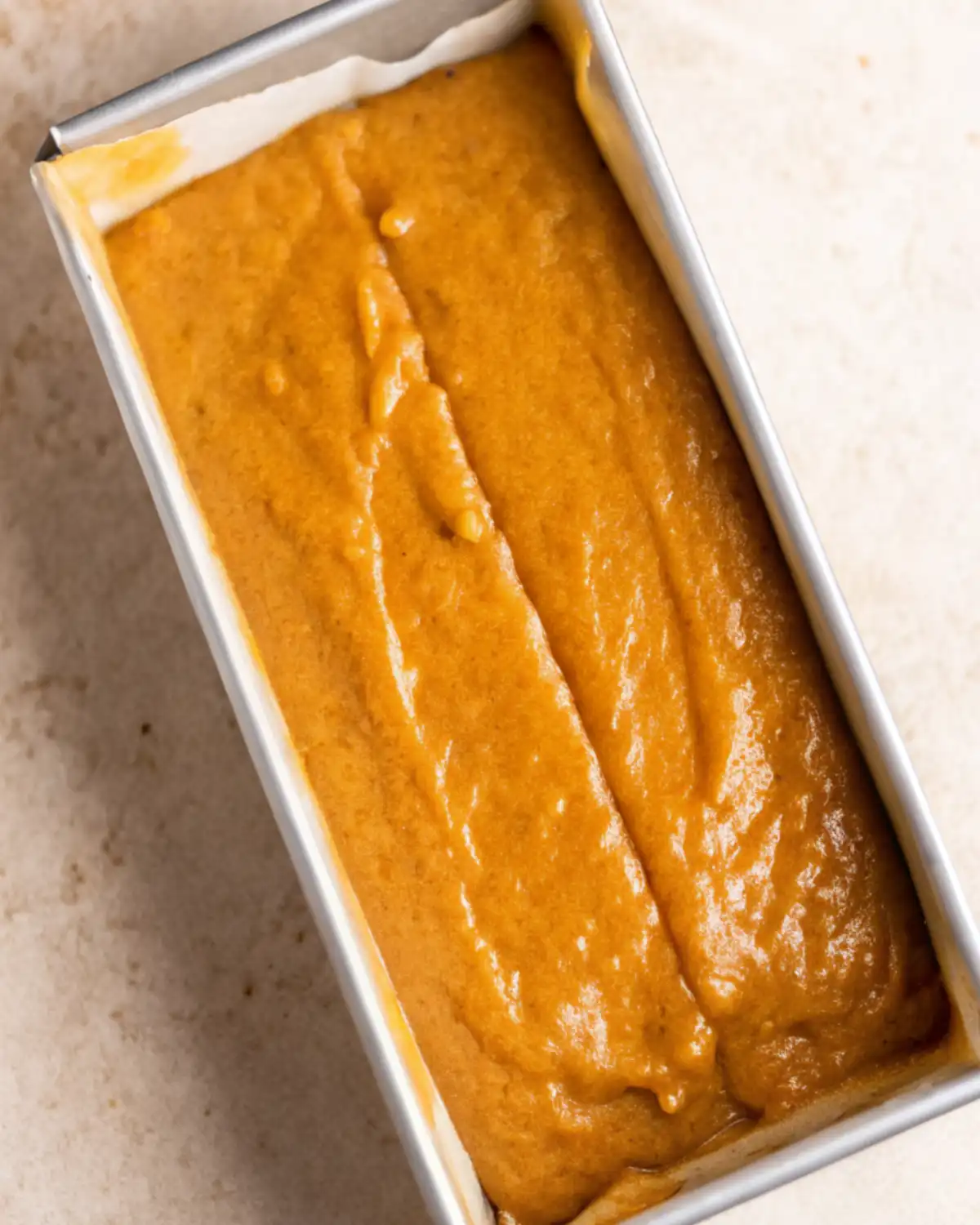
Pour the batter into a greased loaf pan and smooth the top. Bake at 350°F (175°C) for about 55–65 minutes, or until a toothpick inserted into the center comes out clean or with just a few crumbs.
Cool before frosting
Let the bread cool in the pan for about 10 minutes, then transfer to a wire rack to cool completely. This step is important—if the bread is too warm, the frosting will melt.
Make the cream cheese frosting
Beat together softened cream cheese, butter, powdered sugar, and vanilla until light and creamy. Spread it generously over the cooled loaf.
Slice & enjoy
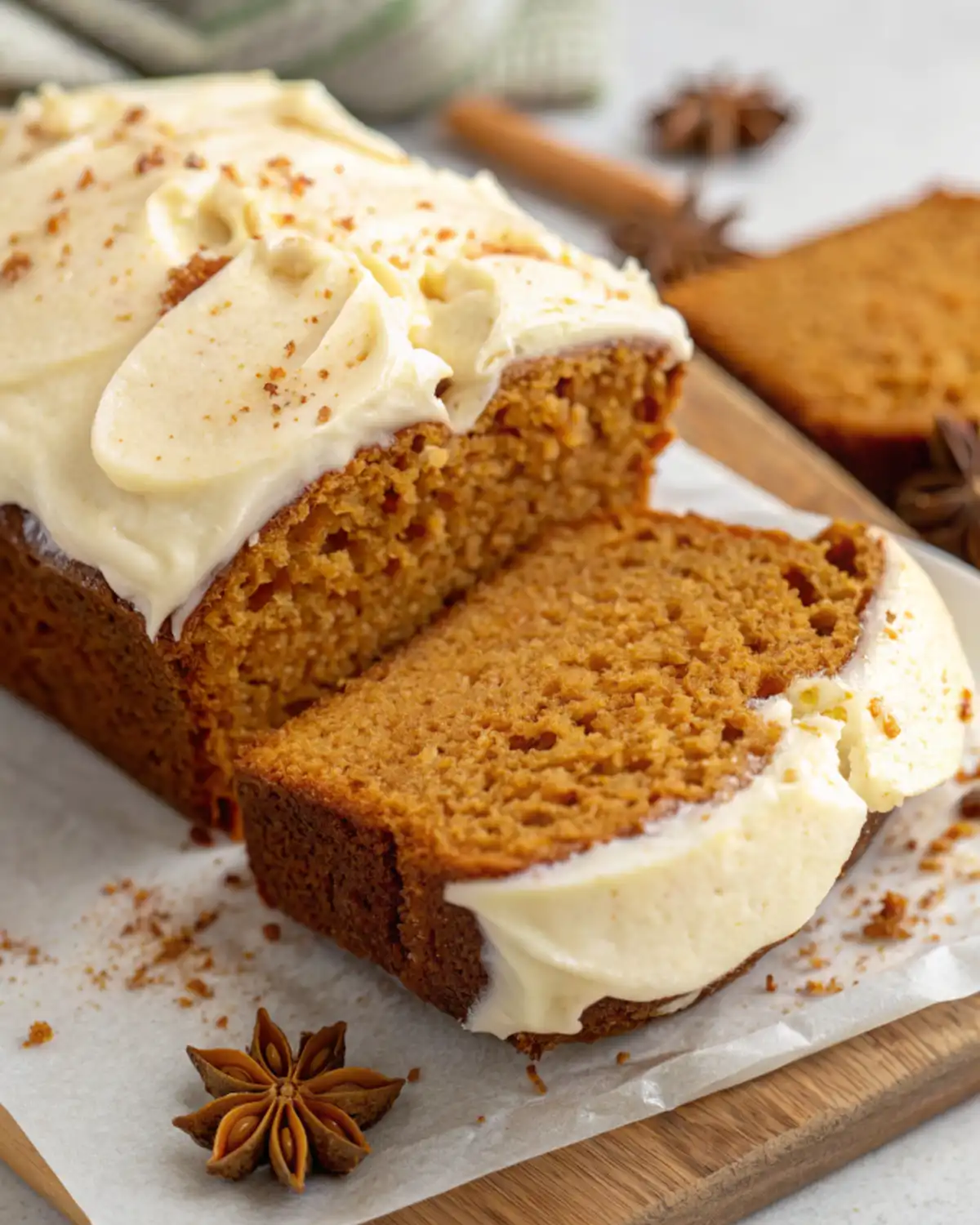
Cut thick slices, serve with a cup of coffee or tea, and enjoy the rich, spiced sweetness with that tangy cream cheese topping.
Tips & Adaptations
The beauty of sweet potato bread is that it leaves plenty of room for a little creativity. Think of this recipe as your base, solid, cozy, and delicious on its own, but always ready for a personal twirl. Maybe you’re craving more spice, maybe you want to sneak in some chocolate, or maybe you need to make it fit your family’s dietary needs. With just a few easy tweaks, this loaf can be whatever you want it to be.
Flavor Boosts
- Add extra spices like cloves or cardamom for a bolder taste.
- Fold in chopped nuts or chocolate chips for more texture.
- Swirl cream cheese into the batter for a festive twist.
Lighter Options
- Reduce the sugar if your sweet potatoes are extra sweet.
- Swap part of the oil for applesauce or Greek yogurt to cut calories without losing moisture.
Dietary Adaptations
- Gluten-Free: Use a 1:1 gluten-free baking blend.
- Vegan: Replace eggs with flax eggs and use vegan cream cheese for the frosting.
- Dairy-Free: Try a dairy-free cream cheese or a simple glaze made with almond milk and powdered sugar.
How to Store Sweet Potato Bread
Sweet potato bread keeps wonderfully soft and moist, which makes it perfect for packing in a lunchbox or enjoying on the go. With the right storage, it’s just as delicious days after baking:
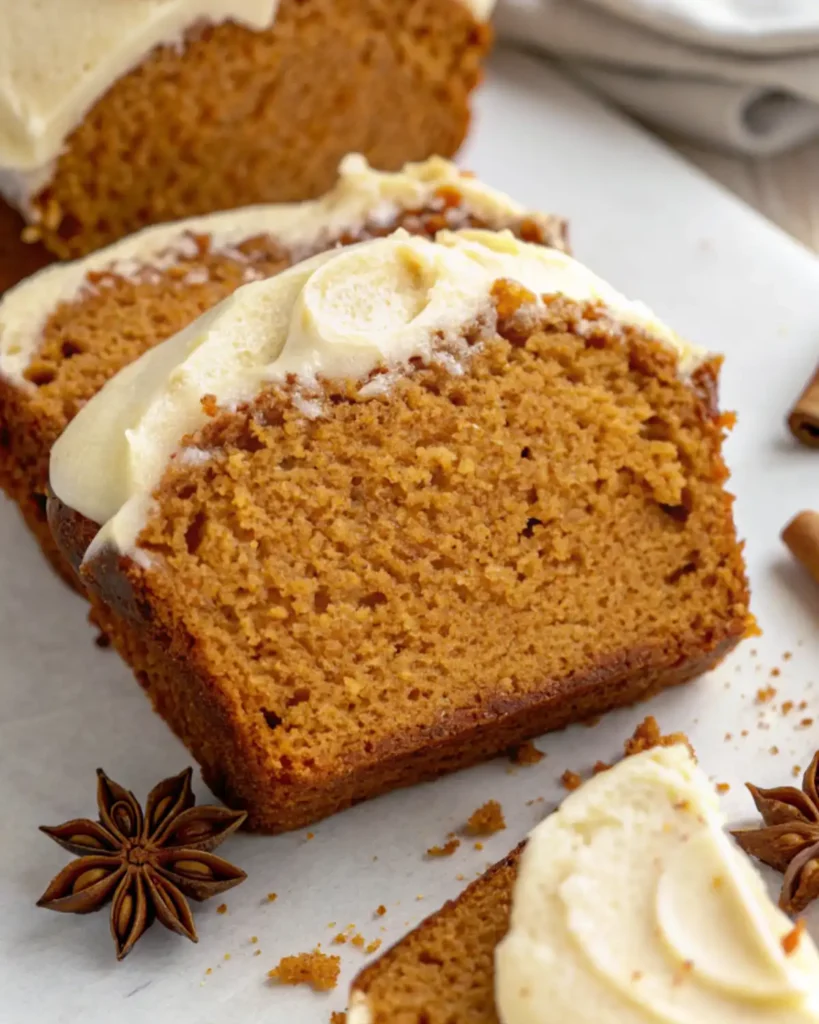
- Lunchbox ready: Slice the loaf into thick pieces and wrap them individually in parchment paper or reusable wraps. They’ll hold up well at room temperature for the day, making them perfect for school or work snacks.
- Room temperature: If the loaf is unfrosted, keep it tightly wrapped or in an airtight container on the counter for up to 3 days.
- With frosting: Because of the cream cheese topping, frosted sweet potato bread should be stored in the fridge. To pack for lunch, keep slices chilled until morning and wrap them, by lunchtime, the frosting will have softened perfectly.
- Freezer-friendly: For grab-and-go snacks, freeze individual slices (with or without frosting). Wrap them well, store in a freezer bag, and just take one out the night before. They’ll be ready by morning, soft and moist as if freshly baked.
Health Benefits & Nutrition
Sweet potato bread isn’t just cozy and delicious, it also carries a few hidden health perks. Sweet potatoes themselves are naturally rich in nutrients, which means every slice brings a little extra goodness to the table.
- Rich in vitamin A: Sweet potatoes are loaded with beta-carotene, which supports healthy vision and a strong immune system.
- Fiber boost: Their natural fiber helps keep you full longer and supports good digestion.
- Lower sugar release: Compared to refined carbs, sweet potatoes often have a lower glycemic index, which means they provide steadier energy.
I also recently learned that the way you cook sweet potatoes actually changes how they affect blood sugar. Boiling tends to keep their glycemic index lower than baking, leading to a gentler rise in blood sugar. I came across this fascinating explanation on Healthline, and it made me appreciate even more how versatile and nourishing sweet potatoes can be, even in something as comforting as this bread.
Of course, sweet potato bread with cream cheese frosting is still a treat, but it’s comforting to know that each slice is packed with flavor and a little natural nutrition.
Try It & Share Your Twist!
Sweet potato bread is the kind of recipe everyone loves to make their own. Maybe you’ll add chocolate chips, maybe you’ll swirl in extra cream cheese, or maybe you’ll keep it classic and simple. However you bake it, this loaf has a way of disappearing quickly once it hits the table.
If you try this sweet potato bread, don’t keep it to yourself, share your version on Pinterest or Facebook! Tag it, pin it, or post it so friends and family can see your twist on this cozy recipe. You never know who you might inspire to preheat their oven.
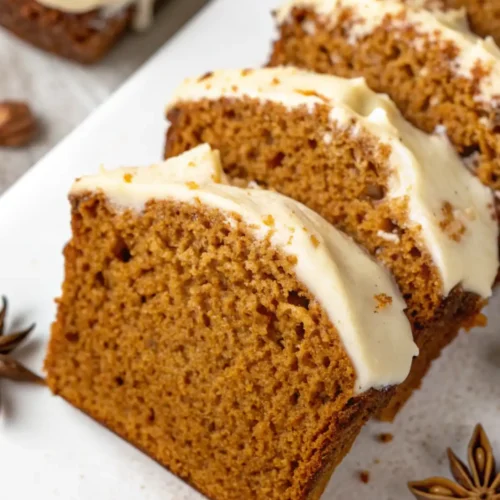
Sweet Potato Bread with Cream Cheese Frosting
Ingredients
For Sweet Potato Bread
- 1 1/2 cups mashed sweet potato (cooked & cooled)
- 1 3/4 cups all-purpose flour
- 1 cup brown sugar
- 1/2 cup granulated sugar
- 2 large eggs
- 1/2 cup neutral oil (vegetable or canola)
- 1 teaspoon vanilla extract
- 1 teaspoon baking powder
- 1/2 teaspoon baking soda
- 1/2 teaspoon salt
- 1 1/2 teaspoons ground cinnamon
- 1/2 teaspoon ground nutmeg
- 1/2 teaspoon ground ginger
For frosting
- 8 oz cream cheese, softened
- 1/4 cup butter, softened
- 1 1/2 cups powdered sugar
- 1 teaspoon vanilla extract
Instructions
For Sweet Potato Bread
- Preheat oven to 350°F (175°C). Grease and line a 9×5-inch loaf pan.
- Prepare the sweet potato: roast or boil until soft, peel, mash, and let cool.
- In a large bowl, whisk together mashed sweet potato, sugars, eggs, oil, and vanilla until smooth.
- Add flour, baking powder, baking soda, salt, and spices. Gently fold until just combined.
- Pour batter into loaf pan and bake for 55–65 minutes, or until a toothpick comes out clean.
- Cool in the pan for 10 minutes, then transfer to a wire rack to cool completely.
For frosting
- Beat cream cheese and butter until smooth. Add powdered sugar and vanilla, and beat until fluffy.
- Spread frosting over the cooled loaf, slice, and enjoy.
Notes
More Recipes You’ll Love
Craving more delicious recipes? Try these next:
FAQs About Sweet Potato Bread
Can diabetics eat sweet potato bread?
Yes, diabetics can enjoy sweet potato bread in moderation! Sweet potatoes have a low glycemic index compared to regular potatoes, meaning they release sugar more slowly into the bloodstream. When making the bread, consider using alternative sweeteners like coconut sugar or reducing the amount of sugar in the recipe to make it even more diabetic-friendly.
Why do you soak sweet potatoes before baking?
Soaking sweet potatoes isn’t mandatory, but it can help reduce some of the starch. This is particularly helpful if you’re frying or roasting them for other recipes, as it can lead to a crispier texture. For baking sweet potato bread, this step isn’t necessary since the mashed sweet potatoes are meant to add moisture and sweetness to the loaf.
How many carbs are in sweet potato bread?
The carb content in sweet potato bread depends on the recipe and serving size. On average, a slice contains about 20-25 grams of carbohydrates. To lower the carb count, you can substitute part of the flour with almond or coconut flour, which are low-carb options.
What is the white inside a sweet potato?
The white substance you might see inside a sweet potato is simply sap, which is a mix of sugars and starches. It’s completely natural and safe to eat. This sap is more noticeable in fresh sweet potatoes and doesn’t affect their flavor or texture when used in recipes like sweet potato bread.
